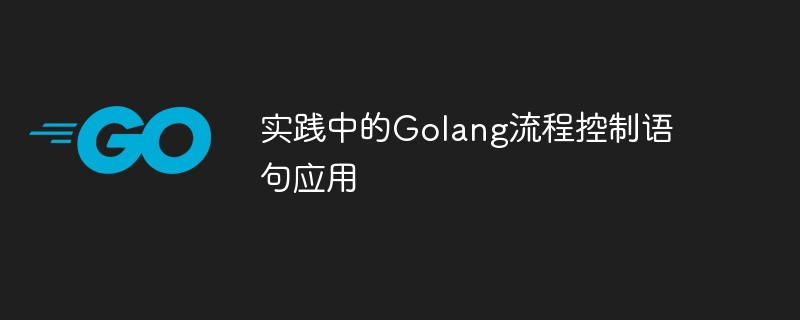Home >Backend Development >Golang >Golang flow control statement application in practice
Golang flow control statement application in practice
- PHPzOriginal
- 2024-04-03 16:51:021193browse
Golang flow control statements can control program flow, execute or skip code blocks based on specific conditions. Commonly used statements include: if-else statements: execute different code blocks based on conditional values. switch statement: Execute a block of code that matches a specific value based on the expression value. for loop: Repeatsly executes a block of code as long as a condition is true. range loop: Iterates over the elements of a range (such as an array, slice, or map) and executes a block of code.

Golang flow control statement application in practice
The flow control statement in Golang allows developers to control the program flow according to specific Conditionally execute or skip blocks of code. The following are some common flow control statements and their practical cases.
if-else statement
if condition {
// 条件为 true 时执行
} else {
// 条件为 false 时执行
}Practical case:
func isEven(number int) bool {
if number%2 == 0 {
return true
} else {
return false
}
}This function checks whether the given number is even. and returns a boolean value.
switch statement
switch expression {
case value1:
// expression 等于 value1 时执行
case value2:
// expression 等于 value2 时执行
...
default:
// 其他情况下执行
}Practical case:
func getGrade(score int) string {
switch score {
case 90, 91, 92, 93, 94, 95, 96, 97, 98:
return "A"
case 80, 81, 82, 83, 84, 85, 86, 87, 88, 89:
return "B"
case 70, 71, 72, 73, 74, 75, 76, 77, 78, 79:
return "C"
default:
return "F"
}
}This function returns the student's score based on the given score.
for loop
for condition {
// 条件为 true 时执行
}Practical case:
func sumNumbers(numbers []int) int {
sum := 0
for i := 0; i < len(numbers); i++ {
sum += numbers[i]
}
return sum
}This function adds all the numbers in the given array and Return the sum.
range loop
for key, value := range map {
// 对 map 的每个键值对执行
}Practical case:
func printMap(m map[string]string) {
for key, value := range m {
fmt.Println(key, ": ", value)
}
}This function prints all key-value pairs in the given map.
By mastering these flow control statements, Golang developers can write clear, concise, and maintainable code. Through practical examples, we show how to use these statements effectively in real-world applications.
The above is the detailed content of Golang flow control statement application in practice. For more information, please follow other related articles on the PHP Chinese website!

